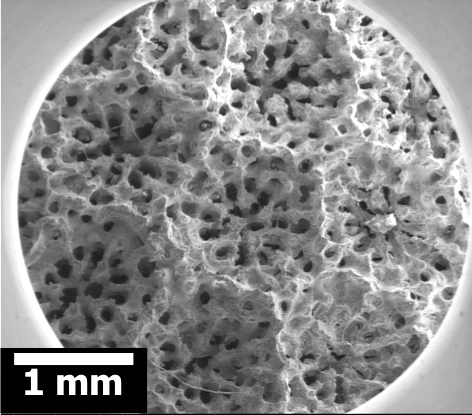As threats to coral reefs grow, scientists are taking a nanoscale look at how they form skeletons.

Scanning electron microscopy images of a Porites lobata coral. The top image shows the surface, from which living tissue was removed. The bottom image is an etched cross-section surface showing a spherulite; with a granular crystal center and needle-like crystal bundles radiating outwards. Spherulites form the building blocks of coral skeletons. (Credit: Renée van de Locht/Roland Kröger and Wikimedia Commons)
For a recent study, researchers looked at the smallest building blocks that can be identified—a microstructure called spherulites—by making a thin cross-section—less than 100 nanometers—of a skeleton crystal. They then used transmission electron microscopy (TEM) to analyze the crystals. The TEM micrographs revealed three distinct regions: randomly orientated granular, porous nanocrystals; partly oriented nanocrystals, which were also granular and porous; and densely packed aligned large needle-like crystals. These different regions could be directly correlated to times of the day: at sunset, granular and porous crystals are formed, but as night falls, the calcification process slows down and there is a switch to long aligned needles. “Coral plays a vital role in a variety of eco-systems and supports around 25 percent of all marine species. In addition, it protects coastlines from wave erosion and plays a key role in the fisheries and tourism industries,” says Renée van de Locht, a PhD student in the physics department at the University of York and corresponding author of the study. “However, the fundamental principles of coral’s skeleton formation are still not fully understood. “It has been suspected for some time that the contrast bands seen in crystals in optical images were daily bands. Through our research we have been able to show what the crystals actually contain and the differences between day and night crystals.” The research concentrated on three species of tropical, reef-building coral: Porites lobata, Siderastrea sidereal, and Montastrea annularis.
Source: http://www.reefs.com/blog/2013/11/13/daynight-changes-coral-skeletogenesis/



No comments:
Post a Comment